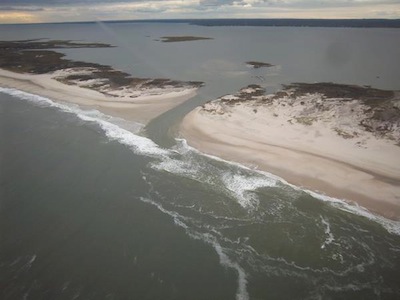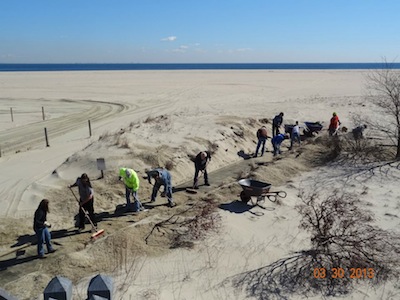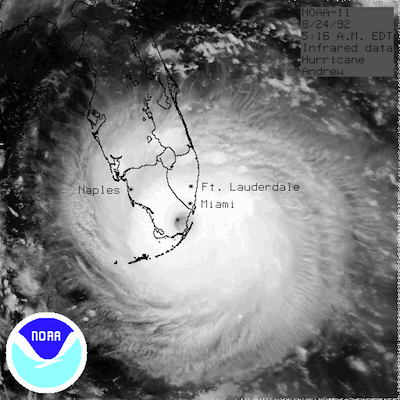
Parks damaged by Sandy work to recover
More than $71 billion of damage, 87 fatalities and nine months later, the United States is still recovering from Hurricane Sandy.
America’s national parks are not immune from the destruction associated with these high-powered storms. A total of 70 national park sites, including all 15 located in New Jersey and New York, were impacted.
Immediate Impact and Damage
Sandy is often called the “perfect storm,” due to a confluence of aspects. The hurricane, combined with a storm coming in from the west, was only a Category 1 upon landfall on the U.S. East Coast. However it was an extremely low-pressure system, which caused it to be atypically strong for a Category 1. The storm left its mark along the entire East Coast.
| Click on the video at right to view an audio slideshow about FEMA’s relief efforts following Hurricane Sandy. The story was prepared, and is narrated, by writer Carlee Rasner. |
Gateway National Recreation Area is one of the park service sites that suffered the most, with an estimated $170 million in damage according to the park’s public affairs specialist, Daphne Yun.
All of the GNRA’s 11 sites have been reopened. Sandy Hook Unit was the last of the group and it just opened again on May 1.
The Sandy Hook Unit, located in southern New Jersey, sustained significant amounts of flooding, especially to the bay side. The multi-use path was completely broken in half and the waste water center was incapacitated. The biggest issue with on the ocean side was the sand. Most of Sandy Hook reopened on May 1 and the area’s most popular beaches will be opened with lifeguard supervision over Memorial Day Weekend.
“There was so much sand put in the parking lot it looked like the middle of a Saudi Arabian desert,” Yun said.
In addition to Gateway, Fire Island, a national seashore on Long Island, N.Y., took a hit from Sandy as well. The island experienced two breaches, one at Old Inlet and another in Smith Point County Park. A breach is where the water freely flows between the bay and the ocean, covering up any and all land in between.
 |
The Smith Point County Park breach on Fire Island right after Sandy in fall 2012. Since then, the breach has been manually filled and closed (Photo courtesy of the National Park Service). |
The National Park Service said in a post-Sandy report that the 1997 Breach Contingency Plan (BCP) was put into place within 48 hours of the storm. The BCP declares that any breach outside of a federally designated wilderness area to be filled immediately.
Since Smith Point County Park is not located inside one of those areas, it was closed in November. Any breaches inside a federally designated wilderness area must be monitored during a 45 to 60 day period to determine whether it will naturally close or not.
According to the report, the data shows no indication that the Old Inlet breach is unstable and it is likely to close naturally in the future. As of April 10, Tthe National Park Service continues to diligently observe the breach in the wilderness area. .
Perhaps one of the most publicized areas impacted by Sandy is the Statue of Liberty.
When Hurricane Sandy hit, the Statue of Liberty was in its direct surge path and 75 percent of Liberty Island was underwater. The monument itself managed to survive, but the island’s utilities, back-up generator and power systems fell victim to the storm.
The Ellis Island museum, a part of the Statue of Liberty, remains without power nine months later, according to Superintendent Dave Luchsinger. The museum collection was not harmed during or after the storm, but it has been moved to a more stable, climate-controlled environment.
Plans to reopen the Statue of Liberty are scheduled for July 4, but Ellis Island will remain closed indefinitely.
Hurricanes of Years Past
Although Hurricane Sandy is the most recent storm, other major hurricanes have caused their fair share of damage throughout the east coast, both in property and wildlife.
In 2005, Hurricanes Katrina and Wilma took a toll on the Everglades National Park in Homestead, Fla. The result of both storms in one year decimated an area of the park known as Flamingo, the only overnight accommodations available. Flamingo was very popular among frequent park visitors, especially fishermen, and a movement arose promptly after the storm to rebuild it, though nothing has materialized so far.
| The sand on the ocean side of Sandy Hook was the biggest problem that occurred after the storm. The volunteers have worked hard to remove sand from the area (Photo courtesy of the Gateway National Recreation Area). |  |
The National Park Service is self-insured, meaning they don’t have any assistance from a big name insurance company to assist in the recovery process. Lack of funding is a main reason why reconstruction has taken so long.
Big Cypress National Preserve was not spared from the 2005 storm either. Loop Road, the main scenic drive through the Preserve, was extensively damaged during the hurricane, which would eventually lead to the park having to renovate and repair all 16.63 miles of it in 2011. Currently, the road is reopened and available for visitors to use.
Hurricane Wilma arrived in South Florida on Oct. 25, 2005, exactly seven years before the arrival of Sandy in South Florida. Wilma was a Category 2 hurricane that took seven lives and $2 billion in damage.
The blow of Wilma and Katrina to South Florida pales in comparison to that of Hurricane Andrew in 1992. Andrew is the fourth costliest hurricane of all time, with a death toll of 65 and $28 billion in destruction.
Biscayne National Park’s historic Stiltsville was almost completely demolished. Andrew left only seven of more than 30 structures standing.
Hurricane Andrew devastated Adams Key, destroying everything on the island including the once popular Cocolobo Cay Club.
The animal population of Biscayne National Park was altered by Andrew as well. The marsh rabbit is one of the four reported mammals to live on Elliott Key; however status of this species of rabbit is questionable since the hurricane in 1992. The impact was also felt on the red-bellied squirrel population, whose status is still unknown to this date.
| This satellite image of Hurricane Andrew shows the massive size of the storm and where it first made landfall in South Florida. The eye of the storm was just over Elliott Key, a part of Biscayne National Park (Photo courtesy of the National Hurricane Center). |  |
The Recovery Process
Recovery began almost instantaneously following the hurricane’s departure. There were volunteer clean-ups in Sandy Hook and Brooklyn, including one last week. According to Yun, an event management team came and stationed at Fort Wadsworth on Staten Island.
“Personnel were sent from basically every park around the country,” Yun said. “It was quite an outpouring.” The necessary jobs varied from working with public affairs to the more physical debris removal.
In contrast, South Florida was much more prepared for the massive strength of a hurricane than the northeast. Full recovery from Superstorm Sandy isn’t expected to be soon.
“Everything looks a lot better,” Yun said, “but we still have a ways to go.”

Comments are Closed